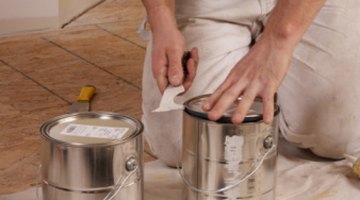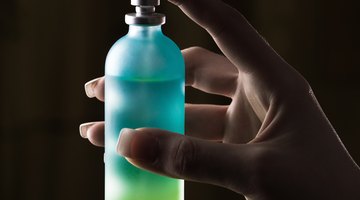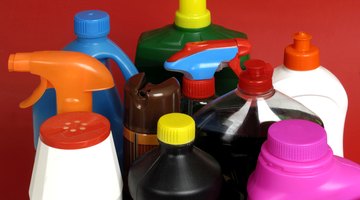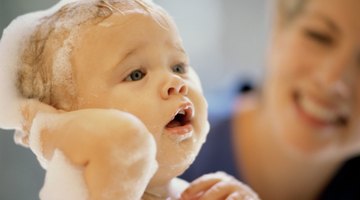What Is the Effect of House Mold in Infants?
Household mold can cause illness. In most cases, healthy people recover, but in some instances, individuals can suffer long-term effects from mold exposure, especially when toxigenic mold is the cause of illness. Those with weaker immune systems, the elderly, children and infants are more susceptible to mold-related illnesses, according to the U.S. Federal Emergency Management Agency, or FEMA. Infants are particularly sensitive to all kinds of mold, and in some cases, infants exposed to mold suffer serious and long-term illnesses.
Background
Mold reproduces and spreads via mold spores. Once indoors, mold growth is promoted by any source of moisture, from household plants to pet urine, adds the AAP.
Geographic Location

How Does Mildew Affect an Infant?
Learn More
Mold can grow in any environment, even in dryer climates. All it takes is unnoticed water seepage anywhere within or near a building for mold infestation to take hold indoors, according to the Weather Channel. Mold that causes toxic effects, such as Stachybotrys atra, has been found in all 50 U.S. states, reports CBS News. Toxigenic mold is found in all types of buildings, including businesses, schools and daycares.
VOCs and Mycrotoxins
Some molds generate “microbial volatile organic compounds,” or mVOCs, and mycotoxins, warns the Weather Channel. MVOCs formed from fungal metabolism often make people very ill, especially children and infants. These compounds are directly discharged into the air and are known to cause a host of respiratory problems and other ill effects.
Common Effects
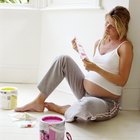
Are Paint Vapors Harmful to Infants?
Learn More
Children and infants are especially prone to the effects of mold exposure. Even the more common types of mold--Cladosporium, Penicillium, Aspergillus and Alternaria--can cause health problems for infants, according to the AAP. However, toxic effects from molds, such as Fusarium, Trichoderma and Stachybotrys, may cause:
- more severe health reactions in infants
- including acute vomiting
- diarrhea
- asthma attacks
- warns the AAP
Long-term Effects
Molds that release mycotoxins into the air can cause serious damage to the central nervous system and lungs, and according to mold exposure specialist Dr. Eckhardt Johanning, long-term exposure to toxic-producing molds can also cause chronic effects on memory and other cognitive functionality, reports CBS News. While most mold-related illnesses subside once infestation is discovered and the contaminated space is properly cleaned and disinfected, some molds producing more potent toxins have caused pulmonary hemorrhaging or hemosiderosis in infants, according to the AAP.
Pulmonary Hemorrhage
With repeated exposure to powerful toxins from mold, infants are sometimes seriously affected, and in some cases, long-term exposure leads to death. One infant eventually died from pulmonary hemorrhage, according to the report. Other infant fatalities across the nation linked to SIDS may relate instead to mold exposure, according to the AAP.


